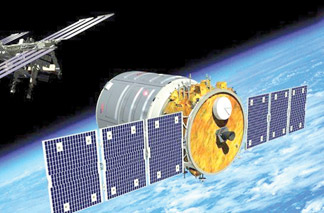NASA spacecraft will forecast solar storms
|

This artistís rendering made available by Orbital Sciences shows
their proposed Cygnus space-craft, right, approaching the
International Space Station. File photo AP
|
With the help of NASA spacecraft observations and new data processing
techniques, scientists can for the first time track the effects of a
solar storm on Earth, offering new advancements in our ability to
predict space weather and how it will impact satellites, communications,
power grid and air traffic control equipment on Earth.
The solar storms, called Coronal Mass Ejections (CMEs), are being
observed from NASA's twin Solar Terrestrial Relations Observatory, or
STEREO, spacecraft launched in 2006. The duo represents a key component
within a fleet of NASA spacecraft that enhance the capability to predict
solar storms.
New processing techniques used on STEREO data allow scientists to see
how solar eruptions develop into space storms at the Earth.
"The clarity these new images provide will improve the observational
inputs into space weather models for better forecasting," said Lika
Guhathakurta, STEREO programme scientist at NASA Headquarters in
Washington.
CMEs are billion-ton clouds of solar plasma launched by the same Sun
explosions that spark solar flares. When they sweep past Earth, they can
cause auroras, radiation storms that can disrupt sensitive electronics
on satellites, and in extreme cases, power outages. Better tracking of
these clouds and the ability to predict their arrival is an important
part of space weather forecasting.
These observations can pinpoint not only the arrival time of the CME,
but also it's mass.
When this technique is applied to future storms, forecasters will be
able to say with confidence whether Earth is about to be hit by a small
or large cloud, and where on the Sun the material originated.
- The Hindu |

